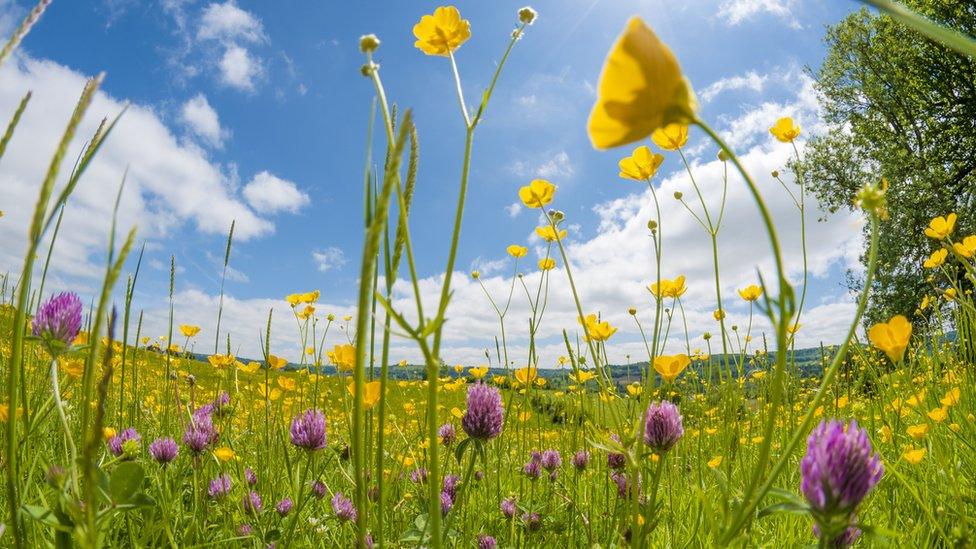Climate Change: New nature projects to help cut UK's carbon
- Published
- comments

A series of nature projects that store carbon and restore habitats have been unveiled by the Wildlife Trusts as part of efforts to tackle the climate and nature crises.
Wildlife Trusts said the projects will help the UK to cut its emissions to "net zero", which is as close to zero as possible, and then balancing any remaining pollution with measures to absorb carbon.
The project has been put together by 46 nature charities who want to use "nature based solutions." That means using landscapes and habitats to tackle climate emissions at the same time as helping to re-grow habitats in the natural world.
The 12 schemes include improving wetlands across four counties in England and Wales, reintroducing beavers, restoring peatland in five counties and expanding saltmarsh along the Essex coast.
They also include planting new seagrass habitat in the Solent, connecting up fragmented woodland throughout Derbyshire, helping protect temperature-sensitive chalk grassland butterflies, and supporting a new project to restore a kelp forest off the coast of Suffolk.
Saltmarsh: Salt marshes protect coastal areas from erosion by acting as a buffer against waves and reducing flooding by slowing and absorbing rainwater.
Peatlands: Peatlands are areas of land, habitats, formed from carbon rich, dead and decaying plant material under waterlogged conditions.
Nearly ÂŁ2 million has been raised so that the projects can move forward as soon as possible.
Craig Bennett, chief executive of The Wildlife Trusts, said: "Nature can be our biggest ally in limiting global temperature rises, but we have to give it a huge helping hand.
"We need to cut emissions at source to fight climate change and we can also have a big impact by restoring nature because wilder places lock-up carbon.
"That means repairing the amazing habitats in our seas, rewetting peatlands, dramatically changing how we manage farmland, rewilding landscapes, and bringing back habitats that have been lost."
- Published29 April 2021
- Published25 June 2021
- Published25 May 2021
